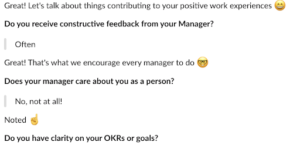As technology rapidly advances, software engineering is becoming an increasingly fast-paced field where maximizing productivity is critical for staying competitive and driving innovation. Efficient resource allocation, streamlined processes, and effective teamwork are all essential components of engineering productivity. In this guide, we will delve into the significance of measuring and improving engineering productivity, explore key metrics, provide strategies for enhancement, and examine the consequences of neglecting productivity tracking.
What is engineering productivity?
Engineering productivity refers to the efficiency and effectiveness of engineering teams in producing work output within a specified timeframe while maintaining high-quality standards. It encompasses various factors such as resource utilization, task completion speed, deliverable quality, and overall team performance. Essentially, engineering productivity measures how well a team can translate inputs like time, effort, and resources into valuable outputs such as completed projects, software features, or innovative solutions.
Tracking software engineering productivity involves analyzing key metrics like productivity ratio, throughput, cycle time, and lead time. By assessing these metrics, engineering managers can pinpoint areas for improvement, make informed decisions, and implement strategies to optimize productivity and achieve project objectives. Ultimately, engineering productivity plays a critical role in ensuring the success and competitiveness of engineering projects and organizations in today’s fast-paced technological landscape.
Why does engineering productivity matter?
Impact on project timelines and deadlines
Engineering productivity directly affects project timelines and deadlines. When teams are productive, they can deliver projects on schedule, meeting client expectations and maintaining stakeholder satisfaction.
Influence on product quality and customer satisfaction
High productivity levels correlate with better product quality. By maximizing productivity, engineering teams can focus on thorough testing, debugging, and refining processes, ultimately leading to increased customer satisfaction.
Role in resource allocation and cost-effectiveness
Optimized engineering productivity ensures efficient resource allocation, reducing unnecessary expenditures and maximizing ROI. By utilizing resources effectively, tech companies can achieve their goals within budgetary constraints.
The Importance of tracking engineering productivity
Insights for performance evaluation and improvement
Tracking engineering productivity provides valuable insights into team performance. By analyzing productivity metrics, organizations can identify areas for improvement and implement targeted strategies for enhancement.
Facilitates data-driven decision-making
Data-driven decision-making is essential for optimizing engineering productivity. Organizations can make informed decisions about resource allocation, process optimization, and project prioritization by tracking relevant metrics.
Helps in setting realistic goals and expectations
Tracking productivity metrics allows organizations to set realistic goals and expectations. By understanding historical productivity data, teams can establish achievable targets and benchmarks for future projects.
Understanding engineering productivity metrics
Below are a few important engineering metrics that can help in measuring their productivity:
Productivity ratio
The productivity ratio measures the output generated by a team relative to the input resources expended. It provides a quantitative assessment of team efficiency and effectiveness.
Throughput
Throughput refers to the rate at which work items are completed within a specified time frame. It measures the team’s capacity for delivering work and can help identify bottlenecks in the workflow.
Cycle time
Cycle time measures the time it takes to complete a single iteration of a process or task. Organizations can identify opportunities for process optimization and efficiency improvement by tracking cycle time.
Lead time
Lead time measures the time elapsed from a task’s initiation to its completion. It provides insights into the overall efficiency of the workflow and can help identify areas for streamlining processes.
Code review turnaround time
Code review turnaround time tracks the time taken for code reviews to be completed. It affects the overall speed and efficiency of the development process.
Factors affecting engineering productivity
Team dynamics and collaboration
Effective teamwork and collaboration are essential for maximizing engineering productivity. Organizations can leverage team members’ diverse skills and expertise to achieve common goals by fostering a collaboration and communication culture.
Work environment and organizational culture
The work environment and organizational culture play a significant role in determining engineering productivity. A supportive and conducive work environment fosters team members’ creativity, innovation, and productivity.
Resource allocation and workload management
Efficient resource allocation and workload management are critical for optimizing engineering productivity. By allocating resources effectively and balancing workload distribution, organizations can ensure that team members work on tasks that align with their skills and expertise.
Strategies to improve engineering productivity
Identifying productivity roadblocks and bottlenecks
Identifying and addressing productivity roadblocks and bottlenecks is essential for improving engineering productivity. By conducting thorough assessments of workflow processes, organizations can identify inefficiencies, focus on workload distribution, and implement targeted solutions for improvement.
Implementing effective tools and practices for optimization
Leveraging effective tools and best practices is crucial for optimizing engineering productivity. By adopting agile methodologies, DevOps practices, and automation tools, engineering organizations can streamline processes, reduce manual efforts, enhance code quality, and accelerate delivery timelines.
Prioritizing tasks strategically
Strategic task prioritization, along with effective time management and goal setting, is key to maximizing engineering productivity. By prioritizing tasks based on their impact and urgency, organizations can ensure that team members focus on the most critical activities, leading to improved productivity and efficiency.
Promoting collaboration and communication
Promoting collaboration and communication within engineering teams is essential for maximizing productivity. By fostering open communication channels, encouraging knowledge sharing, and facilitating cross-functional collaboration, organizations can leverage the collective expertise of team members to drive innovation, and motivation and achieve common goal setting.
Continuous improvement through feedback loops and iteration
Continuous improvement is essential for maintaining and enhancing engineering productivity. By soliciting feedback from team members, identifying areas for improvement, and iteratively refining processes, organizations can continuously optimize productivity, address technical debt, and adapt to changing requirements and challenges.
Consequences of not tracking engineering productivity
Risk of missed deadlines and project delays
Neglecting to track engineering productivity increases the risk of missed deadlines and project delays. Without accurate productivity tracking, organizations may struggle to identify and address issues that could impact project timelines and deliverables.
Decreased product quality and customer dissatisfaction
Poor engineering productivity can lead to decreased product quality and customer dissatisfaction. Organizations may overlook critical quality issues without effective productivity tracking, resulting in negative business outcomes, subpar products, and unsatisfied customers.
Inefficient resource allocation and higher costs
Failure to track engineering productivity can lead to inefficient resource allocation and higher costs. Without visibility into productivity metrics, organizations may allocate resources ineffectively, wasting time, effort, and budgetary overruns.
Best practices for engineering productivity
Setting SMART goals
Setting SMART (specific, measurable, achievable, relevant, time-bound) goals is essential for maximizing engineering productivity. By setting clear and achievable goals, organizations can focus their efforts on activities that drive meaningful results and contribute to overall project success.
Establishing a culture of accountability and ownership
Establishing a culture of accountability and ownership is critical for maximizing engineering productivity. Organizations can foster a sense of ownership and commitment that drives productivity and excellence by empowering team members to take ownership of their work and be accountable for their actions.
Promoting work-life balance
Ensure work-life balance at the organization by promoting policies that support flexible schedules, encouraging regular breaks, and providing opportunities for professional development and personal growth. This can help reduce stress and prevent burnout, leading to higher productivity and job satisfaction.
Embracing automation and technology
Embracing automation and technology is key to streamlining processes and accelerating delivery timelines. By leveraging automation tools, DevOps practices, and advanced technologies, organizations can automate repetitive tasks, reduce manual efforts, and improve overall productivity and efficiency.
Investing in employee training and skill development
Investing in employee training and skill development is essential for maintaining and enhancing engineering productivity. By providing ongoing training and development opportunities, organizations can equip team members with the skills and knowledge they need to excel in their roles and contribute to overall project success.
Using Typo for improved engineering productivity
Typo offers innovative features to streamline workflow processes, enhance collaboration, and boost overall productivity in engineering teams. It helps with early indicators of their well-being and actionable insights on the areas that need attention through signals from work patterns and continuous AI-driven pulse check-ins on the experience of the developers.

It also sends automated alerts to your communication to help you identify burnout signs in engineering teams at an early stage. This enables leaders to support developer well-being, maintain productivity, and create a positive and thriving work environment.
Improve engineering productivity always to stay ahead
Measuring and improving engineering productivity is essential for achieving project success and driving business growth. By understanding the importance of productivity tracking, leveraging relevant metrics, and implementing effective strategies, organizations can optimize productivity, enhance product quality, and deliver exceptional results in today’s competitive software engineering landscape.
In conclusion, engineering productivity is not just a metric; it’s a mindset and a continuous journey towards excellence. To accelerate this journey, collaborate with Typo. Visit our website today!





